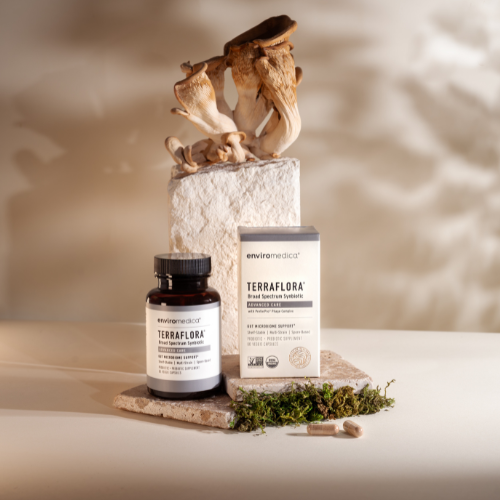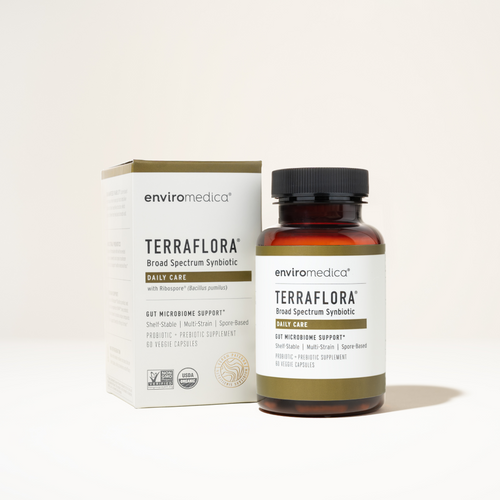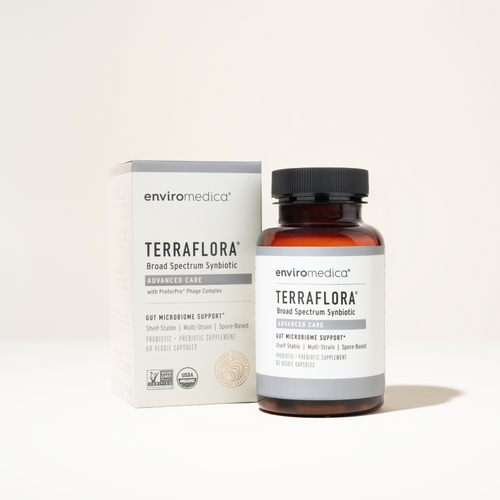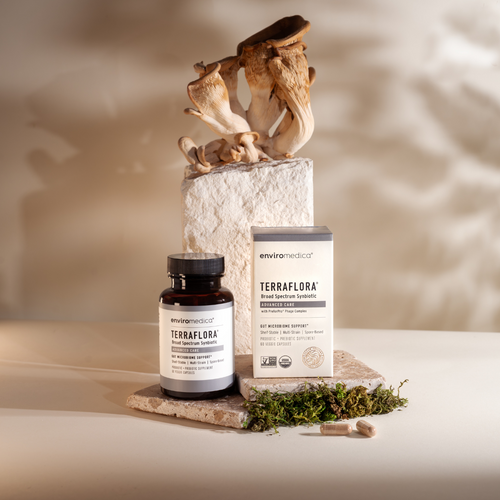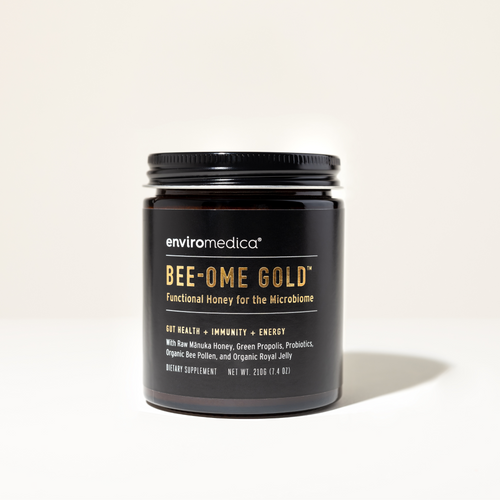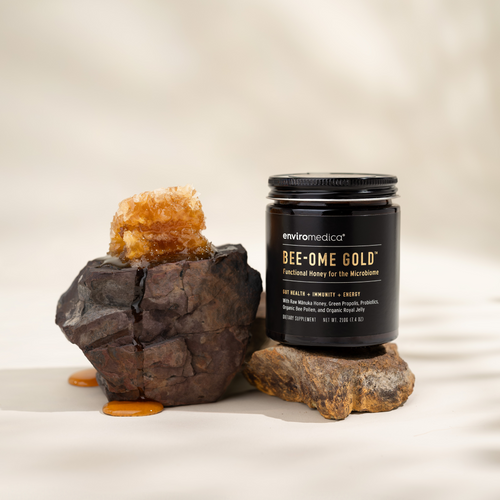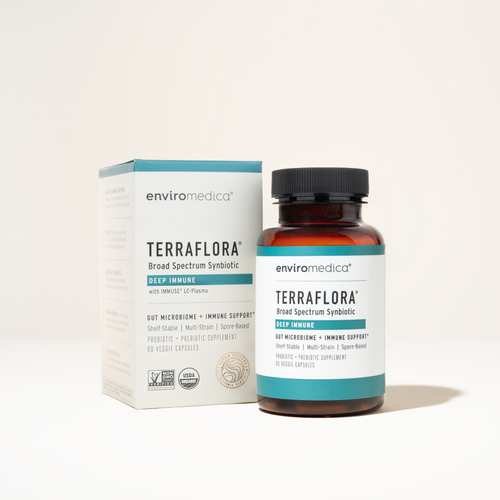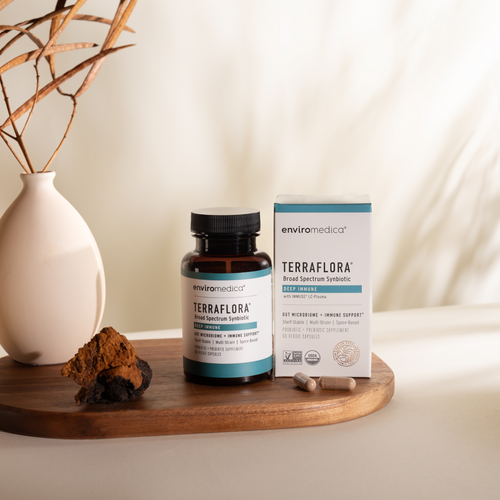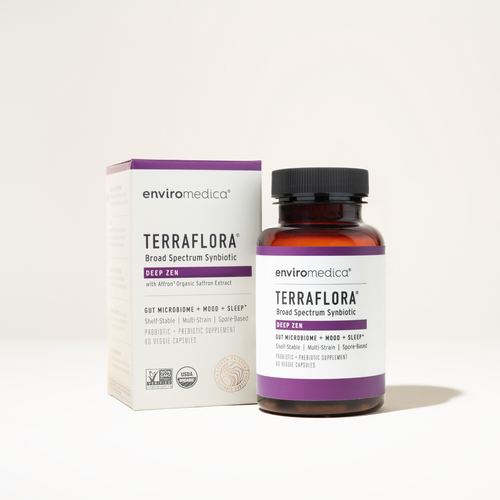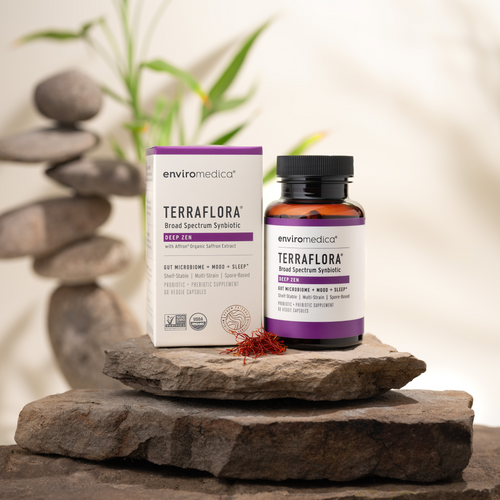A labeling mystery
If you’ve shopped for probiotics, you’ve probably seen “CFU” plastered across labels. Some newer products, like Terraflora® and Bee-Ome Gold™, list “AFU.” What do these letters mean—and why should you care?
The truth is that CFU (colony-forming units) and AFU (active fluorescent units) measure very different things. Understanding the difference can help you choose probiotics that actually deliver on their promises.
What are CFUs?
CFU stands for colony-forming units, the traditional way probiotics have been measured for decades. A sample is spread on a petri dish, and scientists count how many colonies grow.
- Strengths: CFU is simple, inexpensive, and long-established.
- Limitations: It only measures the potential for a cell to grow into a colony under lab conditions. Many probiotics don’t survive the process, or may not grow well on standard media, leading to underestimates. Worse, CFU counts may not reflect how many microbes are actually active and functional when you take them.1
CFU is like counting how many seeds you put in a packet—but not whether they’ll sprout when planted.
What are AFUs?
AFU stands for active fluorescent units. This method uses flow cytometry—a laser-based technology that rapidly counts cells and detects which are alive and metabolically active, based on how they take up fluorescent dyes.2
- Strengths: AFU measures living, active cells—those capable of doing real work in your gut.
- Accuracy: Unlike CFU, AFU can detect cells that are viable but not easily cultured, a common feature of spore-forming probiotics.3
-
Reliability: It provides a more consistent and transparent view of what’s inside a capsule or spoonful.
AFU is like checking how many seeds actually sprout in soil—not just how many were in the packet.
Why the difference matters for your microbiome
Probiotic effectiveness depends on whether microbes survive, arrive, and thrive in your gut.
- CFU = Potential. A measure of what could happen, but not always what does.
- AFU = Real Activity. A measure of living microbes capable of germinating, interacting, and supporting your microbiome.
This distinction is critical because many probiotic products on the market overstate their CFU counts at manufacture—only for viability to decline dramatically before you ever take them.4 AFU helps cut through that uncertainty.
Where AFU shines: Spore-forming probiotics
Spore-forming probiotics (like Bacillus species) are uniquely resilient. They exist in a dormant state, protected by a natural shell, and only “wake up” in the right conditions—like the small intestine.
- CFU can underestimate them, because spores don’t always grow on a petri dish.
- AFU captures them more accurately, by detecting viable spores whether or not they germinate in lab culture.3
This is why AFU is particularly important for next-generation products like spore-based synbiotics, where resilience and activity—not just raw numbers—define effectiveness.
Products using AFU: Terraflora and Bee-Ome Gold
At Enviromedica, we use AFU to ensure our labels reflect living, active, and resilient microbes—not just potential counts.
- Terraflora® Synbiotics → Resilient Bacillus spores paired with wild-harvested mushroom and seaweed prebiotics. Designed to rewild the gut microbiome.
- Bee-Ome Gold™ → A hive-inspired synbiotic, blending raw honey, bioactive polyphenols, and spore-forming probiotics measured in AFU.
By using AFU, we can confidently show the real, functional microbes you’re consuming—so you know your microbiome is getting meaningful support.
FAQs about AFU vs CFU
Are higher CFUs always better?
Not necessarily. More CFUs don’t guarantee more benefits. What matters most is whether the microbes are alive, resilient, and studied for human health outcomes.
Why don’t all companies use AFU?
AFU requires specialized equipment (flow cytometry) and is more costly than CFU. Many companies still rely on older methods, even if they provide less accuracy.
Should I choose AFU or CFU probiotics?
If you want the most transparent and accurate measure of living probiotics, AFU provides better assurance. Especially for spore-formers, AFU reflects their true potential.
Do AFU and CFU numbers look different?
Yes—AFU counts may be lower than CFU counts, but they’re more realistic. They reflect what’s actually alive and active, not just what might grow in a dish.
Choosing probiotics that deliver
Labels can be confusing. CFU has long been the standard, but it often overstates or misrepresents probiotic viability. AFU offers a modern, science-driven way to measure what truly matters: living, active microbes capable of supporting your microbiome.
Terraflora® and Bee-Ome Gold™ use AFU because your health deserves transparency and accuracy.
References
- 1. Berney M, Hammes F, Bosshard F, Weilenmann HU, Egli T. Assessment and interpretation of bacterial viability by using the LIVE/DEAD BacLight Kit in combination with flow cytometry. Appl Environ Microbiol. 2007;73(10):3283–3290. doi:10.1128/AEM.02750-06.
- 2.Ben Amor K, Vaughan EE, de Vos WM. Advanced molecular tools for the identification of lactic acid bacteria. J Nutr. 2007;137(3 Suppl 2):741S–747S. doi:10.1093/jn/137.3.741S
- 3.Cangelosi GA, Meschke JS. Dead or alive: molecular assessment of microbial viability. Appl Environ Microbiol. 2014;80(19):5884–5891. doi:10.1128/AEM.01763-14
- 4.Weese JS. Evaluation of deficiencies in labeling of commercial probiotics. Can Vet J. 2003;44(12):982–983. PMID: 14702446
